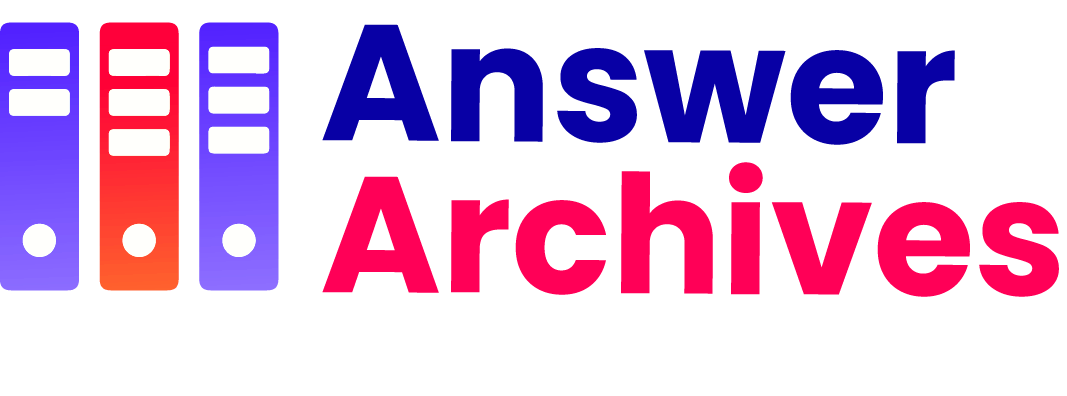


Did you know that over 4.7 billion people now engage with social media daily? It's becoming the backbone of our digital world, influencing decisions, and even shaping cultures. But there's a hidden side to this digital evolution that is crucial to understand.
As we navigate an increasingly connected world, mastering the art of social media education has never been more critical. Ignoring it can lead to missed opportunities and massive knowledge gaps. Let's uncover this urgent need right here and now, but brace yourself for what's to come.

The real shocker isn't the sheer number of users, but how each platform silently gathers data. Facebook, for example, tracks your clicks, tastes, and even your feelings about certain topics. But that’s not even the wildest part…
Forget mastering just the basics. Advanced social media education is redefining careers and opportunities. People are bagging high-paying roles simply by understanding the algorithms and user behaviors these platforms exploit. But that’s not even the most unbelievable part of the story…
What happens next shocked even the experts: the rapid transformation of traditional education systems as they scramble to include digital literacy in their curriculums. Entire industries are evolving at an unprecedented pace. Stay with us as we dive deep into this thrilling evolution and reveal the secrets that could set you on a path to digital mastery.
You might think social media platforms are free, but the hidden cost is your data. These platforms are like digital detectives, collecting and selling information about you at every click. According to recent studies, social media giants rake in billions by trading this data. But there’s one more twist: luxury brands are buying this data to tailor their ads specifically to your lifestyle!

Here’s what you may not know - your digital footprint is a hot commodity. With algorithms predicting your next action, these platforms know what you want before you do. Savvy users are now learning to leverage this insight, flipping the narrative on data control. What you read next might change how you see this forever.
Think only advertisers benefit? Think again. The data allows everyone from content creators to CEOs to improve their strategies. By understanding this digital harvest, you can safeguard your privacy. But how? That’s another story we'll reveal shortly…
As the digital landscape changes, so does the narrative. Every move on social media adds to your profile. The unexpected twist? This data may soon be used in unprecedented ways by sectors beyond advertising. We unravel these mysteries in the following sections, so stay tuned.
Algorithms are not just driving your feed; they're influencing how you perceive reality. From echo chambers to misinformation, the stakes have never been higher. A shift in algorithm logic can stir societal change, evidenced by recent global movements fueled by viral posts. But there’s more: what if we told you these codes were now predicting trends before they happen?

These algorithms analyze millions of signals to curate your online experience. But they can also trap you in a bubble, serving up content that matches your beliefs. Yet, innovative strategies are emerging to break free from these confines, offering a more balanced view of the world. The next revelation about this will leave you questioning everything.
Brave users are rewriting the rules, using digital literacy to outsmart these systems. Now, platforms are using this same data innovation to predict new tastes in music, fashion, and technology. What you see next will change how you interact with every post.
Algorithms don't just control the present; they’re shaping our future behaviors. In the upcoming pages, we delve into how you can learn to harness these systems for personal and professional gain. Don't miss out as we decode these algorithms layer by layer.
Social media literacy isn't just an option anymore—it's a necessity. Schools and universities are integrating it into curriculums, aware that future job markets demand digital-savvy graduates. Recent enrollments in digital courses have skyrocketed, a testament to this growing need. But there's a catch: what if your degree becomes obsolete because of rapid tech advancements?

Understanding how to navigate social networks will soon be as crucial as basic math skills. Forward-thinking employers already assess candidates on their digital acumen. More surprising, self-taught individuals often outperform formally educated counterparts in today’s job landscape. What's next might surprise you even more.
As educational institutions play catch-up, online platforms offer faster, adaptable learning modules. From short courses to certifications, the move is towards flexible education models that cater to rapidly changing tech landscapes. What you learn here could propel you towards unexpected career heights.
The shift towards comprehensive social media education is undeniable. Some experts foresee a world where traditional education systems may need to massively overhaul to stay relevant. As we dive deeper, we reveal fascinating trends in digital education you need to know now.
The impact of social media on mental health has prompted heated debates. While some hail it as a tool for community and connection, others warn of its darker sides—cyberbullying and addiction. Recent studies show alarming statistics; youths spending more than 3 hours a day on these platforms have reduced mental well-being. But there’s a twist: could curated content counteract these effects?

Many users are curating their online spaces, unfollowing negative influences and seeking positivity. This has led to a new wave of digital detox trends. While you might think going offline is the answer, some claim that controlling your feed is a healthier approach. The next piece of information might change your stance.
The evolving social media environment is increasingly focusing on wellness. Platforms are launching features aimed at improving user experience and reducing screen fatigue. Can these changes lead to a healthier digital future? Let’s unpack the potential in our next section.
Friend or foe—social media’s true nature lies in how it's used. By embracing new strategies, users are reshaping their online reality. As we continue this journey, discover how a deeper understanding can lead to a transformative experience.
While many see social media as a pastime, its real power lies beneath the surface. From launching careers to sparking global awareness campaigns, the potential is massive. Recent movements illustrate how well-executed campaigns can rally millions and influence policy changes. But what’s more intriguing is how individuals are using these platforms to build personal empires.

Entrepreneurs are leveraging social networks as a primary tool for business growth. With minimal investment, viral content can reach millions, translating likes and shares into sales figures. If you think this is just for influencers, think again; everyday users are tapping into these perks with a few strategic tactics. What comes next might just unlock new opportunities for you.
Organizations are capitalizing on social channels to cultivate brand loyalty and engage directly with their audience. However, there’s an insider trick that differentiates top performers from the rest. In the next section, we'll delve into these groundbreaking strategies.
Harnessing the power of social media requires not just creativity but a strategic approach. Stay with us as we reveal unconventional methods that can propel you ahead in the digital curve.
Influence on social platforms isn't reserved for celebrities. With the right techniques, anyone can become a powerful voice. Micro-influencers—those with smaller, more engaged followings—are now critical players in digital marketing. Their authenticity resonates more with audiences, leading to higher conversion rates. But there’s an underlying secret to their success: platform algorithms now prioritize content from these micro-voices.

Understanding the nuances of each platform is key. From Instagram’s hashtags to TikTok’s trending challenges, those who master these details gain the upper hand. For instance, knowing when to post can drastically boost engagement, a factor known by only a few savvy users. Could mastering this timing unlock new potential for your content? The upcoming insights could be your breakthrough.
Effective use of social media also hinges on cross-platform integration. Seamlessly weaving between channels strengthens your message’s impact. Top influencers don't just reach their followers, they connect across networks to cast wider nets. What you’ll learn next might just expand your influence exponentially.
The spark of social media influence starts small, often with a single post or tweet. As we venture further, discover the strategies that enable unknowns to emerge as digital powerhouses, changing how influence is perceived forever.
Social media platforms have become essential tools for activism and social change. Viral campaigns have driven policy shifts on a wide range of issues, proving the power of digital voices. Platforms like Twitter and Facebook have been instrumental in connecting activists worldwide. However, what's less known is how governments are now utilizing social media for public engagement with unprecedented transparency.

Beyond protests and movements, digital platforms provide a space for discourse and reform. They offer marginalized groups visibility, leading to more inclusive dialogues. Still, while these platforms empower voices, they also face scrutiny over response moderation and algorithm biases. But what’s even more challenging is the dual use of these networks for misinformation. The upcoming revelations offer a solution to ensuring your feed stays free from deceit.
Technology is a double-edged sword. While it builds communities, it also holds the potential for division. In learning how to navigate these facets, you contribute to a broader, more informed society. We explore the multifaceted role of social networks in aiding or hindering progress in subsequent sections.
The potential of social media for change rests in its users' hands. Join us as we further investigate the dynamics that can either forge unity or widen divides in today's interconnected world.
As social media usage explodes, ethical concerns rise. Users face dilemmas over privacy, consent, and data security. In 2023 alone, a noted 60% of users admitted to feeling watched online. That's only one aspect; the challenge of navigating these ethical waters intensifies as surveillance technology evolves. But here's the twist: companies are now rolling out new protocols to champion user rights.

Online platforms are stepping up, enhancing encryption and transparency in data usage. At the same time, users yearn for more control, voicing demand for features that allow tighter privacy settings. The evolution of user expectations pushes tech firms to up their game. Yet, are these measures enough? There’s a deeper ethical quagmire that might still surprise you.
Users and developers alike face difficult choices in balancing innovation with ethics. As digital citizens, understanding these issues can lead to more informed interactions and decisions online. Gaining insights into this evolving landscape will soon be critical as we reveal what’s on the horizon.
As you continue through this narrative, discover what initiatives are spearheading ethical digital transitions. The insights we offer next might illuminate how you can partake in shaping a more responsible digital age.
Social media isn't just a platform—it's an economic powerhouse. It's a marketplace where brands and consumers collide, generating billions in revenue annually. Yet, while advertising reigns supreme, the scope broadens as new business models emerge. Creators are now partnering directly with platforms to monetize content. However, did you know that some users are earning more from crowdfunding than traditional ads?

The rise of subscription models allows creators to bypass brands, directly engaging their audience for support. This shift transforms followers into paying customers, a method gaining traction across platforms. But here’s where it gets interesting: platforms like YouTube are now offering flavor-enhancing options like Super Chats, where fans pay to have comments featured prominently. Could this reshape consumer-creator relationships?
Monetization isn't limited to big names. Even niche creators amass income streams via diverse opportunities. However, understanding the nuances of platform policies is crucial to tapping these benefits. In the coming segments, learn how you can unlock similar potential and rewrite your income narrative.
The evolving business of social media opens doors to opportunities unforeseen just a decade ago. Stay tuned for further insights into this dynamic field, revealing bold new ways to capitalize on the digital marketplace.
With evolving technologies, the landscape of digital communication sees constant transformation. Social media now incorporates virtual reality (VR), offering immersive experiences once considered science fiction. New features, like Metaverse gatherings, simulate real life, revolutionizing interaction. But what if this is just the beginning? Hints suggest enhanced AI integration that's around the corner.

Artificial intelligence (AI) is gearing to personalize digital experiences further. It's predicting responses and facilitating smarter, more intuitive interactions. While that seems futuristic, some argue it may lead to over-reliance on technology. Yet, AI fuels innovation by assisting in creating deeply engaging content. What lies ahead could redefine communication entirely.
The fusion of emerging technologies opens up transformative experiences in social media. From holograms to AI-driven narratives, the next chapter in online interaction is bound to be extraordinary. Join us as we spotlight advancements set to make waves.
The digital frontier we face holds countless possibilities. Our exploration continues into staggering innovations bound to reshape how we communicate forever—peek into the future with us in the next section.
Social networks span borders, creating a digitally connected global community. Culture exchanges occur instantaneously from American trends catching on in Asia to European ideas sparking interest in Africa. This cross-cultural fusion enriches lives while posing challenges. The question remains: can a hyperconnected world maintain individuality amidst globalization?

Social media hosts a mix of identities and experiences, serving as a platform where cultures converge. While it fosters mutual understanding, it also blurs lines, leading to concerns over cultural homogenization. However, individuals harness these platforms to celebrate uniqueness, revive traditions, and go beyond stereotypes. An upcoming exploration paints a picture of culture preservation amid digital ubiquity.
As platforms like TikTok and Instagram transcend geographical limitations, niche communities evolve. These vibrant cultures within cultures bring personal heritage to the forefront. This nurturing of diversity within the digital realm highlights the balancing act between global influence and local traditions. What you uncover next might inspire cultural rejuvenation in your space.
The resounding effects of this digital tapestry echo worldwide. Through discovery and exploration, uncover the global impact that social networking bestows upon cultures and communities, revealing transformative stories at every turn.
While digital connectivity offers numerous perks, taking a break has its own benefits. The digital detox movement emerges, encouraging individuals to unplug, recharge, and focus on offline interactions. Surveys show a significant drop in anxiety and improved sleep among participants. Yet, many worry about missing out. Could a balance between online engagement and offline presence exist?

Participants of digital detoxes report enhanced clarity and renewed focus upon returning to their devices. Offline retreats and screen-free weekends rise in popularity, yet finding harmony without alienating digital spaces remains key. Surprisingly, experts suggest partial detox measures manage screen time effectively without full withdrawal. Can these ideas foster a healthier relationship with technology?
Implementing digital detox strategies varies across individuals. From using apps that moderate usage to setting tech-free zones at home, the possibilities remain flexible. Striking this equilibrium might just shape resilient digital habits. As we forge ahead, expect insights into innovative detox methods adaptable for any lifestyle.
Exploring the necessity of unplugging reveals a journey into potential well-being improvements. Learn how detaching benefits mental health, productivity, and interpersonal connections, unveiling the restorative power of balance in a digitally laden world.
Social media's role in modern life is now indisputable. From connecting worlds to mobilizing social movements, its influence is profound. But as technology evolves, how will future generations view this digital whirlwind? Initially praised for bridging gaps, will it stand as a tool for unity or a wedge? Delve into the lasting legacy we leave behind.

Today's actions shape tomorrow's digital landscape. Our usage patterns, etiquette, and the precedents we set will impact future interaction dynamics. Yet, many wonder if this era will be remembered for fostering meaningful exchanges or escapism. What's certain is that emerging generations will reinterpret these platforms in unforeseen ways, potentially challenging the norms established today.
Navigating this legacy means embracing adaptability while considering the ethical ramifications of our digital imprints. As we explore what's next, discover the insights keenly observed by social historians and futurists alike.
Our narrative unfolds beyond mere timelines, capturing the essence of social media's imprint on future societies. As we conclude this exploration, look closely at the lessons unearthed, pondering how these insights might just reshape the face of tomorrow's digital interactions.
This extraordinary journey through the social media landscape teaches us this: the digital realm's endless possibilities are mirrored by the responsibilities it imposes on us. With tools to forge connectivity and spark change, let’s wield this power wisely, crafting a purposeful digital future. Don't just consume this knowledge—share it, bookmark it, and step into the digital sphere ready to thrive. What future will you shape today?